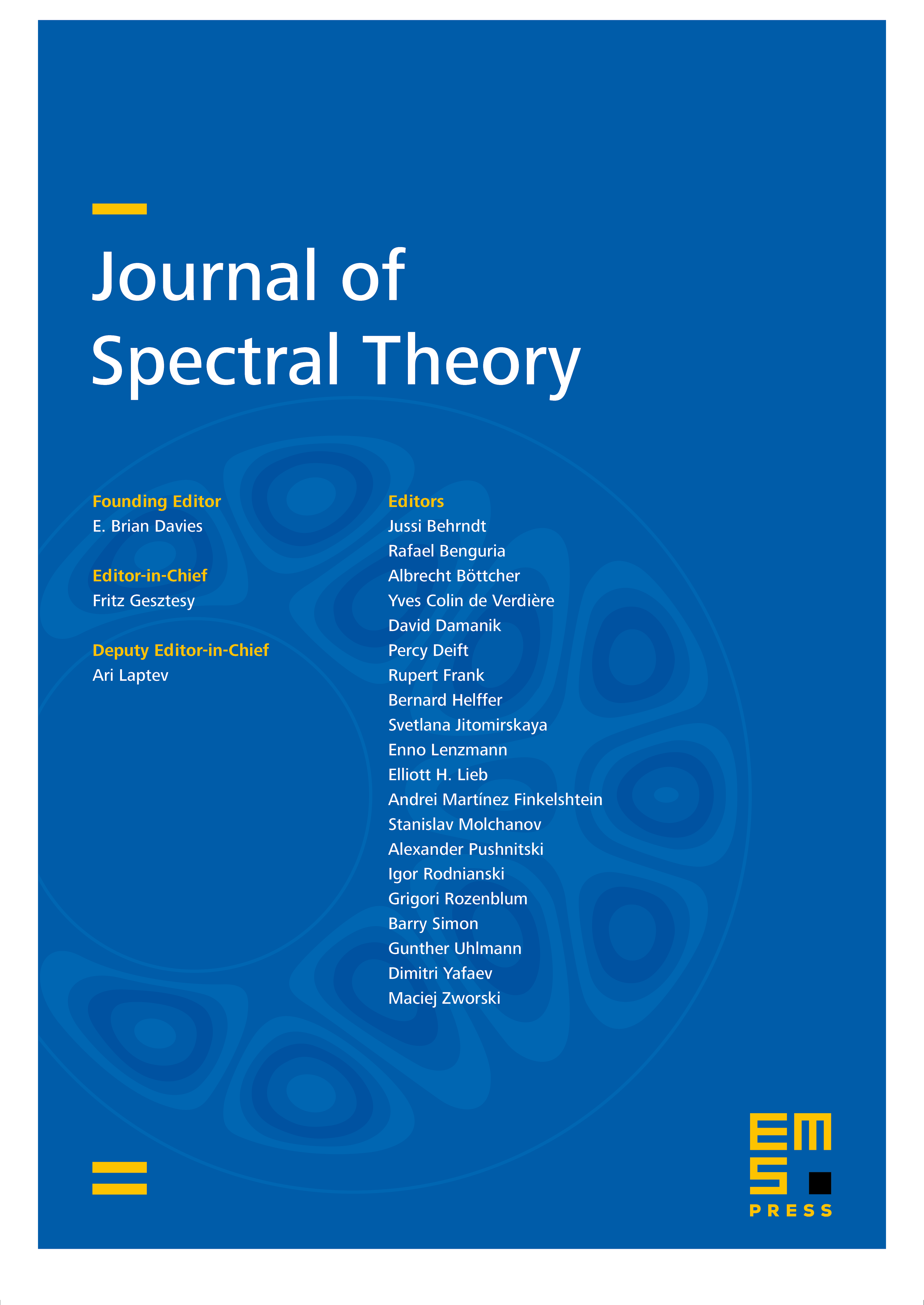Morse theory for discrete magnetic operators and nodal count distribution for graphs
Lior Alon
Massachusetts Institute of Technology, Cambridge, USAMark Goresky
Institute for Advanced Study, Princeton, USA

Abstract
Given a discrete Schrödinger operator on a finite connected graph of vertices, the nodal count denotes the number of edges on which the -th eigenvector changes sign. A signing of is any real symmetric matrix constructed by changing the sign of some off-diagonal entries of , and its nodal count is defined according to the signing. The set of signings of lie in a naturally defined torus of “magnetic perturbations” of . G. Berkolaiko [Anal. PDE 6 (2013), 1213–1233] discovered that every signing of is a critical point of every eigenvalue , with Morse index equal to the nodal surplus. We add further Morse theoretic information to this result. We show if is a critical point of and the eigenvector vanishes at a single vertex of degree , then the critical point lies in a non-degenerate critical submanifold of dimension , closely related to the configuration space of a planar linkage. We compute its Morse index in terms of spectral data. The average nodal surplus distribution is the distribution of values of , averaged over all signings of . If all critical points correspond to simple eigenvalues with nowhere-vanishing eigenvectors, then the average nodal surplus distribution is binomial. In general, we conjecture that the nodal surplus distribution converges to a Gaussian in a CLT fashion as the first Betti number of goes to infinity.
Cite this article
Lior Alon, Mark Goresky, Morse theory for discrete magnetic operators and nodal count distribution for graphs. J. Spectr. Theory 13 (2023), no. 4, pp. 1225–1260
DOI 10.4171/JST/468